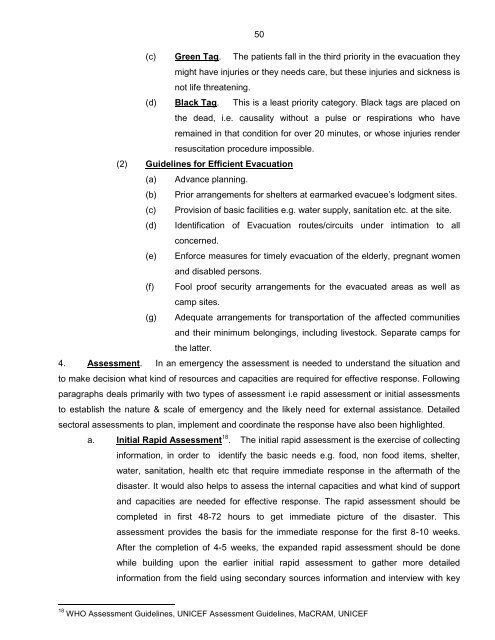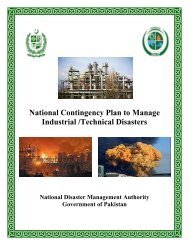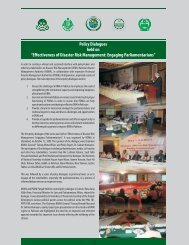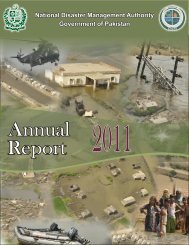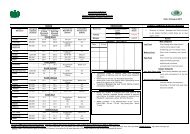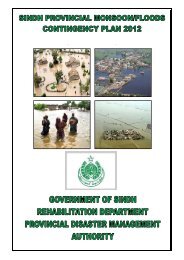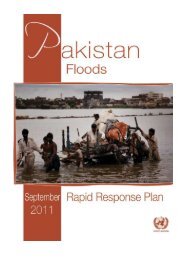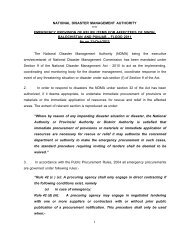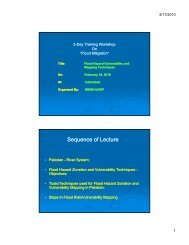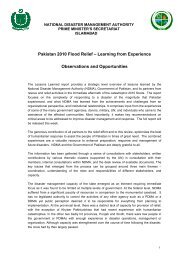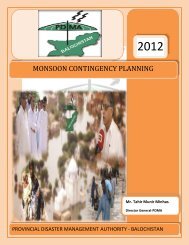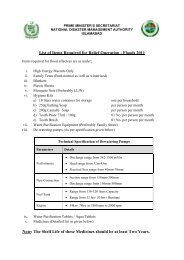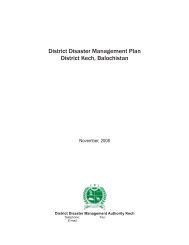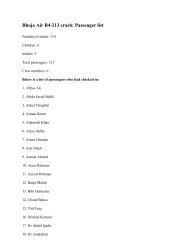National Disaster Response Plan (NDRP) March 2010 - NDMA
National Disaster Response Plan (NDRP) March 2010 - NDMA
National Disaster Response Plan (NDRP) March 2010 - NDMA
Create successful ePaper yourself
Turn your PDF publications into a flip-book with our unique Google optimized e-Paper software.
50<br />
(c) Green Tag. The patients fall in the third priority in the evacuation they<br />
might have injuries or they needs care, but these injuries and sickness is<br />
not life threatening.<br />
(d) Black Tag. This is a least priority category. Black tags are placed on<br />
the dead, i.e. causality without a pulse or respirations who have<br />
remained in that condition for over 20 minutes, or whose injuries render<br />
resuscitation procedure impossible.<br />
(2) Guidelines for Efficient Evacuation<br />
(a) Advance planning.<br />
(b) Prior arrangements for shelters at earmarked evacuee‟s lodgment sites.<br />
(c) Provision of basic facilities e.g. water supply, sanitation etc. at the site.<br />
(d) Identification of Evacuation routes/circuits under intimation to all<br />
concerned.<br />
(e) Enforce measures for timely evacuation of the elderly, pregnant women<br />
and disabled persons.<br />
(f) Fool proof security arrangements for the evacuated areas as well as<br />
camp sites.<br />
(g) Adequate arrangements for transportation of the affected communities<br />
and their minimum belongings, including livestock. Separate camps for<br />
the latter.<br />
4. Assessment. In an emergency the assessment is needed to understand the situation and<br />
to make decision what kind of resources and capacities are required for effective response. Following<br />
paragraphs deals primarily with two types of assessment i.e rapid assessment or initial assessments<br />
to establish the nature & scale of emergency and the likely need for external assistance. Detailed<br />
sectoral assessments to plan, implement and coordinate the response have also been highlighted.<br />
a. Initial Rapid Assessment 18 . The initial rapid assessment is the exercise of collecting<br />
information, in order to identify the basic needs e.g. food, non food items, shelter,<br />
water, sanitation, health etc that require immediate response in the aftermath of the<br />
disaster. It would also helps to assess the internal capacities and what kind of support<br />
and capacities are needed for effective response. The rapid assessment should be<br />
completed in first 48-72 hours to get immediate picture of the disaster. This<br />
assessment provides the basis for the immediate response for the first 8-10 weeks.<br />
After the completion of 4-5 weeks, the expanded rapid assessment should be done<br />
while building upon the earlier initial rapid assessment to gather more detailed<br />
information from the field using secondary sources information and interview with key<br />
18 WHO Assessment Guidelines, UNICEF Assessment Guidelines, MaCRAM, UNICEF


